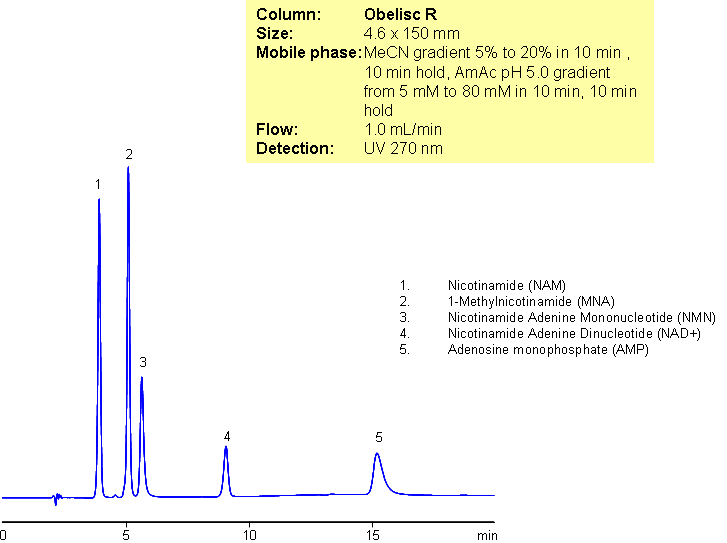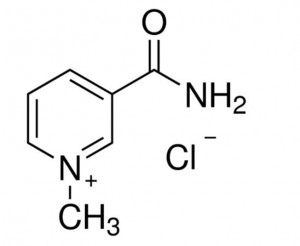| CAS Number | 3106-60-3 |
|---|---|
| Molecular Formula | C7H9N2O |
| Molecular Weight | 137.161 |
| InChI Key | LDHMAVIPBRSVRG-UHFFFAOYSA-O |
| LogP | -2.06 |
| Synonyms |
|
Applications:
UV-Vis Spectrum of 1-Methylnicotinamide
July 25, 2024
Access the UV-Vis Spectrum SIELC Library
If you are looking for optimized HPLC method to analyze 1-Methylnicotinamide check our HPLC Applications library
For optimal results in HPLC analysis, it is recommended to measure absorbance at a wavelength that matches the absorption maximum of the compound(s) being analyzed. The UV spectrum shown can assist in selecting an appropriate wavelength for your analysis. Please note that certain mobile phases and buffers may block wavelengths below 230 nm, rendering absorbance measurement at these wavelengths ineffective. If detection below 230 nm is required, it is recommended to use acetonitrile and water as low UV-transparent mobile phases, with phosphoric acid and its salts, sulfuric acid, and TFA as buffers.
For some compounds, the UV-Vis Spectrum is affected by the pH of the mobile phase. The spectra presented here are measured with an acidic mobile phase that has a pH of 3 or lower.

Separation of Nicotinamide and Related Substances
May 11, 2015

A complex mixture of nicotinamide and related impurities was separated on Obelisc R mixed-mode column. Nicotinamide, methylnicotinamide, nicotinamide adenine mononucleotide, nicotinamide adenine dinucleotide, and adenosine monophosphate were baseline resolved in a 15 minute long method. This mixed-mode approach can be used for analysis of other nucleotides. Obelisc R trimodal column separates this complex mixture based on reversed-phase, cation-exchange and anion-exchange mechanisms. Retention is controlled by amount of ACN, buffer concentration and buffer pH. Additional selectivity can be gained by exploring various buffers within the same pH
Application Column
Obelisc R
SIELC has developed the Obelisc™ columns, which are mixed-mode and utilize Liquid Separation Cell technology (LiSC™). These cost-effective columns are the first of their kind to be commercially available and can replace multiple HPLC columns, including reversed-phase (RP), AQ-type reversed-phase, polar-embedded group RP columns, normal-phase, cation-exchange, anion-exchange, ion-exclusion, and HILIC (Hydrophilic Interaction Liquid Chromatography) columns. By controlling just three orthogonal method parameters - buffer concentration, buffer pH, and organic modifier concentration - users can adjust the column properties with pinpoint precision to separate complex mixtures.
Select optionsAdenosine Monophosphate
Nicotinamide
Nicotinamide Adenine Dinucleotide (NAD)
Nicotinamide Adenine Mononucleotide
UV Detection



